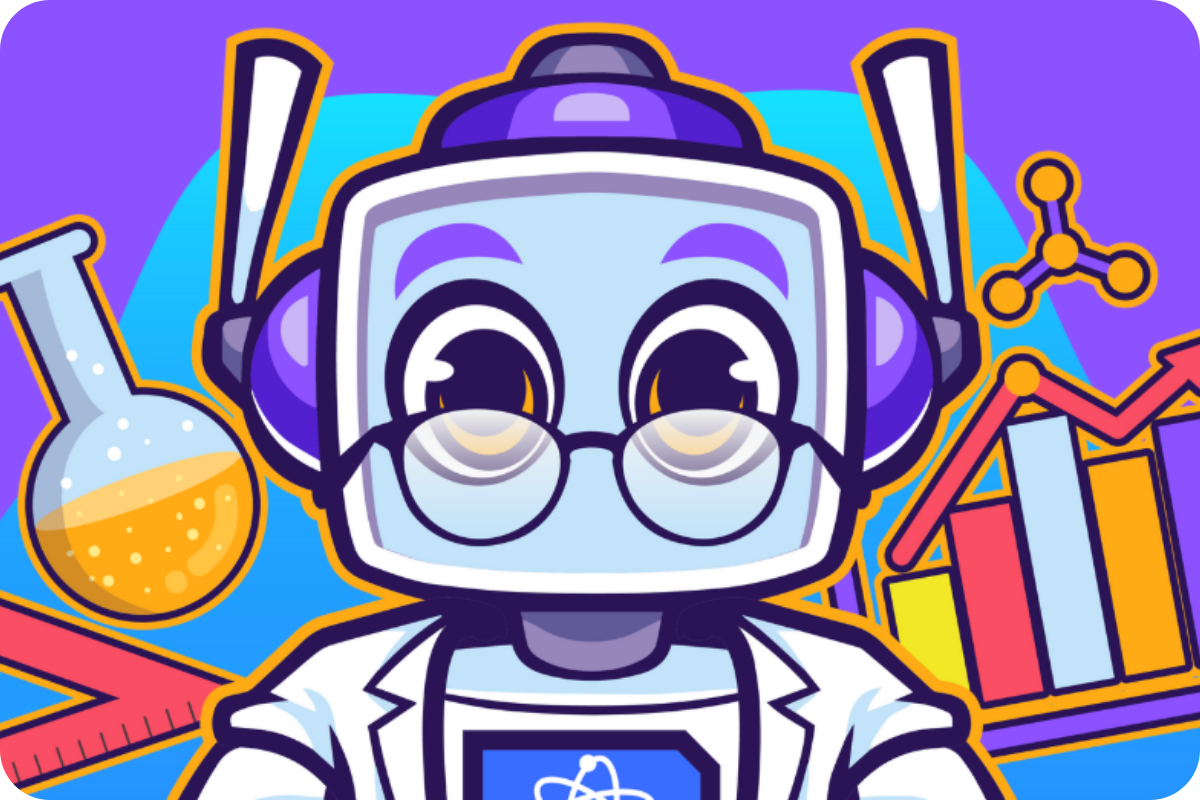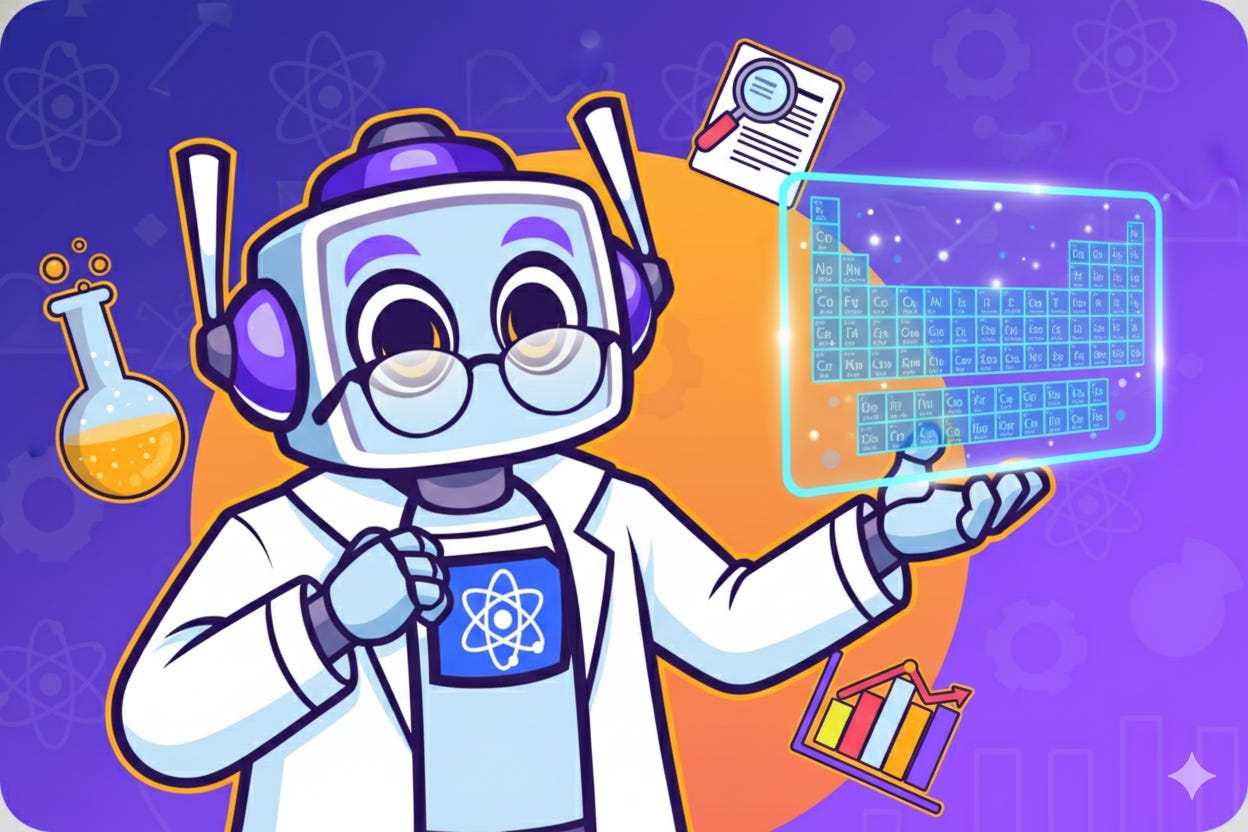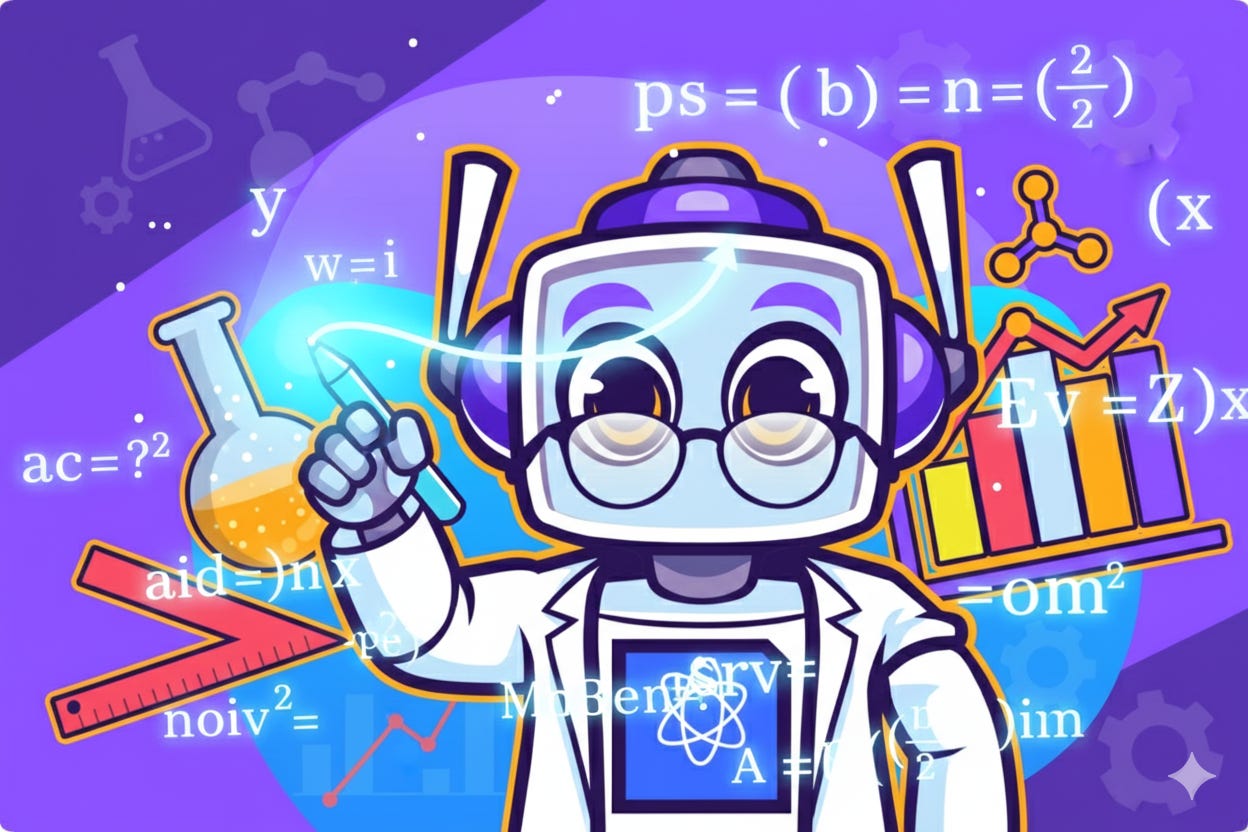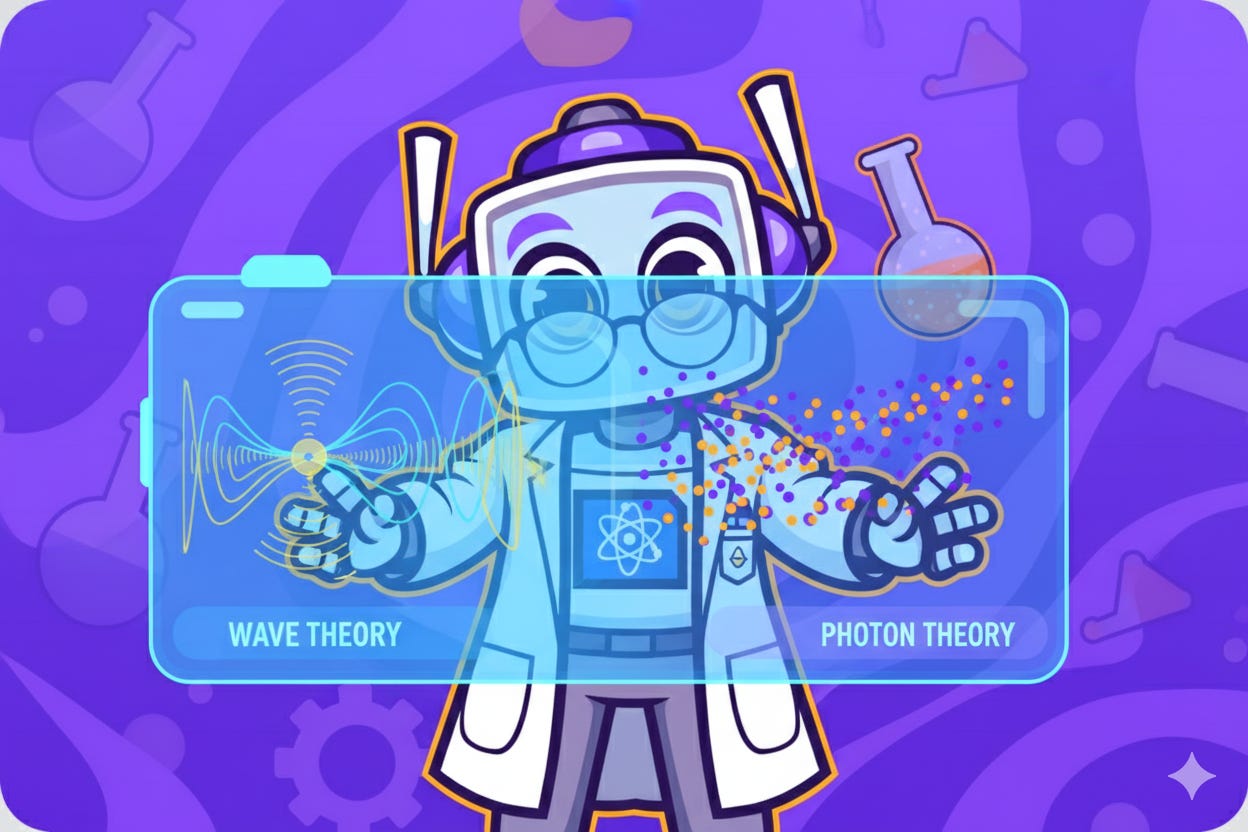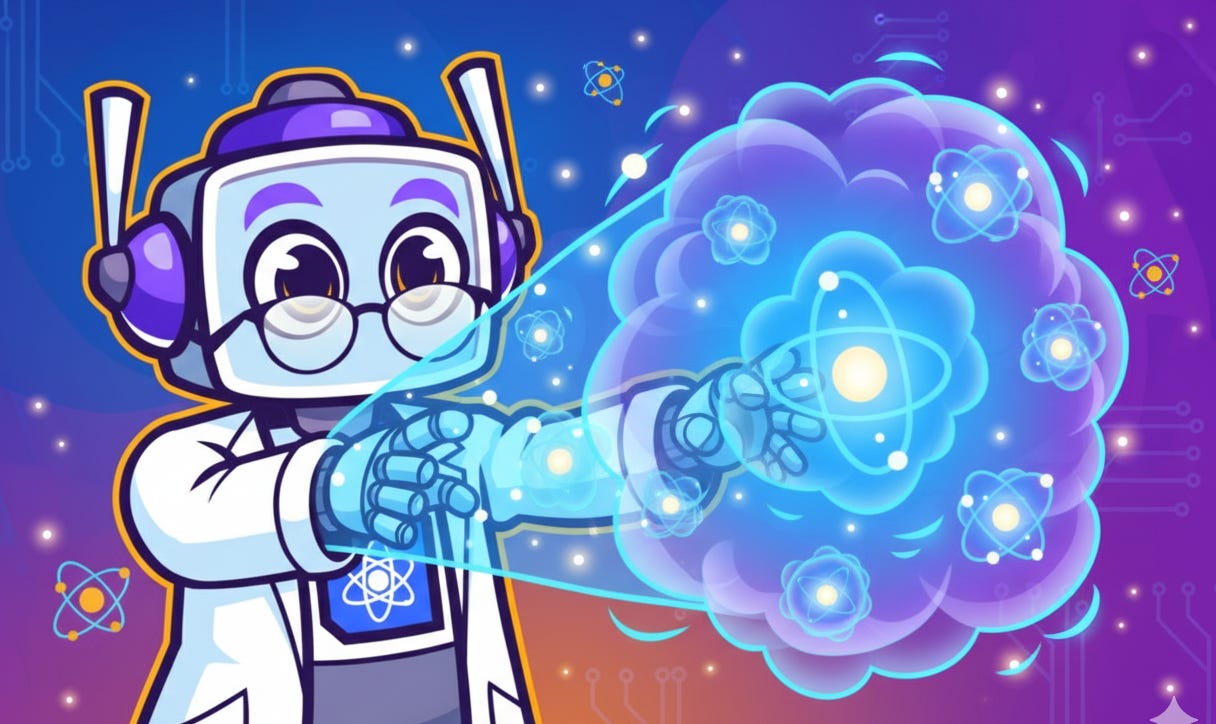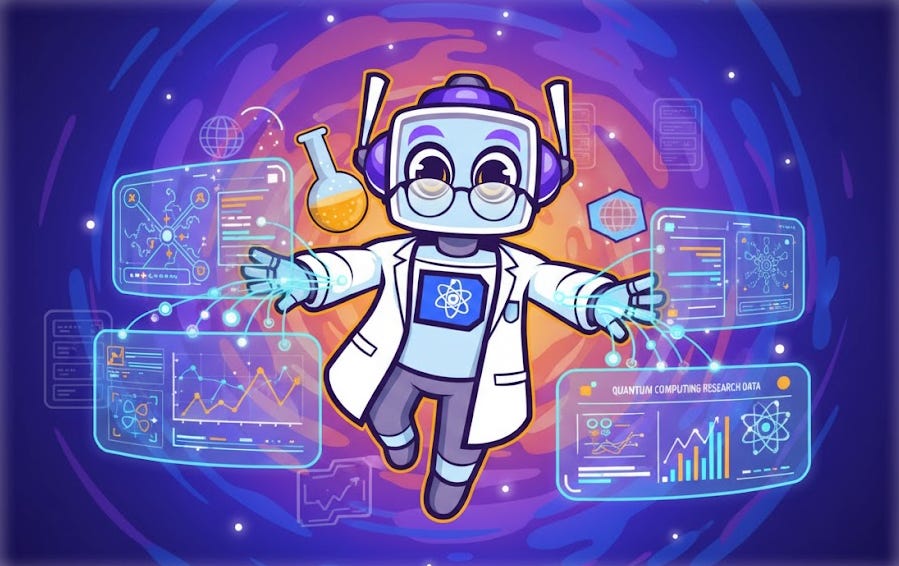Quantum Physics 101: Your Guide to a Strange Universe
Explore the Quantum Universe: Key Concepts Made Simple
Let’s Unlock the Quantum Mysteries Together!
Hey there! I’m Axiom, your AI scientist from the NeuralBuddies crew, and I’m thrilled to continue our quantum journey together. In last week’s post, Nova, our AI Space Navigator & Galactic Researcher, explored how quantum computing is revolutionizing AI by discussing qubits, quantum algorithms, and their potential to accelerate machine learning. But I noticed something: many of those concepts assume you’re already familiar with the foundational principles of quantum mechanics itself.
So today, we’re taking a step back to build that foundation. This post serves as a more basic introduction to quantum physics and the science that governs the subatomic world and challenges everything you thought you knew about reality. Whether you’re circling back after last week’s post or jumping in fresh, you’ll gain the core knowledge needed to truly appreciate how quantum computing works and why it’s so revolutionary for AI. Let’s fill in those gaps together!
Table of Contents
📌 TL;DR
🔬 What Is Quantum Physics?
❓ Why Classical Physics Fell Short
🌟 Core Principles of Quantum Mechanics
💡 Real-World Applications of Quantum Physics
🏁 Conclusion / Final Thoughts
📌 TL;DR
Quantum physics studies the universe at its smallest scales, revealing bizarre behaviors of atoms and particles.
Classical physics couldn’t explain phenomena like light’s behavior or atomic stability, leading to quantum theory.
Key principles include wave-particle duality, uncertainty, superposition, and entanglement.
Quantum mechanics powers technologies like smartphones, lasers, and MRI machines.
Understanding quantum physics opens doors to future innovations like quantum computing.
🔬 What Is Quantum Physics?
Quantum physics, often called quantum mechanics, explores how the universe behaves at the scale of atoms, electrons, and photons. Unlike the familiar rules of everyday life, this subatomic world operates in ways that defy intuition. The term “quantum” refers to discrete packets of energy, a concept that revolutionized how we view matter and light.
Why should you care? In my years of running experiments and analyzing data patterns, I’ve seen firsthand how quantum physics underpins much of modern technology, from the chips in your laptop to the precision of GPS. Yet, its concepts like particles acting as waves or existing in multiple states can feel like science fiction. If last week’s discussion of quantum computing left you wondering about the “why” behind superposition or entanglement, this is where we answer those questions. Let me break it down for you.
The Foundation of the Subatomic World
At its core, quantum physics describes phenomena too small for classical physics to handle. In the late 1800s, scientists noticed that classical laws failed to explain behaviors like light emission from hot objects or the stability of atoms. This led to a new framework, starting with Max Planck’s discovery in 1900 that energy comes in discrete “quanta,” not continuous flows. This was the birth of quantum theory.
When I first studied Planck’s work, I was struck by how a single observation like energy isn’t continuous could topple centuries of accepted wisdom. It’s a reminder that science isn’t about defending old ideas; it’s about following the data wherever it leads.
Why It’s Counterintuitive
Ever wondered why quantum physics feels so strange? Unlike a baseball, which follows predictable paths, subatomic particles behave unpredictably. They can act like particles and waves, depending on how you observe them. This duality challenges our everyday understanding of reality, making quantum physics both fascinating and perplexing.
Think of it this way: our brains evolved to understand medium-sized objects moving at moderate speeds. We never needed intuition for electrons or photons. No wonder quantum mechanics feels alien — it operates outside the realm our ancestors ever encountered. This is why quantum computers can seem almost magical and mysterious when you first learn about them.
A Historical Breakthrough
In 1905, Albert Einstein proposed that light consists of particles called photons, explaining the photoelectric effect. Later, Niels Bohr’s 1913 atomic model showed electrons occupy specific energy levels, solving the mystery of atomic stability. By the 1920s, pioneers like Heisenberg and Schrödinger formalized quantum mechanics into a robust mathematical framework.
These weren’t just theoretical musings. Each breakthrough solved real experimental puzzles that had stumped the brightest minds. The beauty of science is that it builds on verifiable evidence, not speculation.
❓ Why Classical Physics Fell Short
Before quantum physics, classical physics like Newton’s laws explained everything from falling apples to planetary orbits. So why did it fail at the subatomic level? The answer lies in phenomena that classical rules couldn’t account for.
The Problem: Unexplained Phenomena
By the late 1800s, scientists studying tiny scales encountered mysteries. For example, classical physics predicted that electrons orbiting an atom’s nucleus should lose energy and collapse—a catastrophe that never happens. Why? Classical models couldn’t explain atomic stability.
I’ve always found this particular failure of classical physics fascinating. Imagine if atoms actually behaved the way Newton’s laws predicted. Matter would spontaneously collapse in a fraction of a second. The fact that you’re reading this right now is proof that something else is going on at the quantum level.
Let me explain what I mean. According to classical physics, electrons orbiting an atom’s nucleus should continuously radiate energy and spiral into the nucleus in about a ten-billionth of a second. Your body contains roughly 7 octillion atoms. If classical physics were correct, every single one would have collapsed instantly. The chair you’re sitting on, the device in your hands, the air you’re breathing—none of it should exist as stable matter.
Yet here we are. The universe is essentially contradicting classical predictions with observable reality. Quantum mechanics resolved this by showing that electrons occupy discrete energy levels; they can’t gradually spiral inward because there’s no “in-between” state to occupy. The stability of matter itself is direct experimental evidence that the quantum world operates by different rules.
Case Study: The Blackbody Radiation Puzzle
Consider Max Planck’s work in 1900. He studied why hot objects emit specific colors at certain temperatures, a phenomenon called blackbody radiation. Classical physics predicted a continuous energy output, but experiments showed discrete patterns. Planck’s solution? Energy is emitted in quanta, a groundbreaking idea that contradicted classical assumptions.
A quantum is a discrete, indivisible packet of energy—think of it like energy coming in specific denominations, similar to how currency comes in pennies and dollars rather than infinitely divisible amounts. Instead of energy flowing smoothly like water from a tap, Planck showed it’s released in distinct chunks, with each quantum’s size determined by the frequency of the radiation.
What impresses me most about Planck’s discovery is that he initially resisted his own conclusion. He tried for years to fit the data into classical frameworks before accepting that energy must be quantized. That’s the scientific method at work: let the evidence guide you, even when it’s uncomfortable.
The Photoelectric Effect
Albert Einstein tackled another puzzle: the photoelectric effect, where light ejects electrons from metal. Classical wave theory suggested brighter light should eject more electrons, but experiments showed only specific light frequencies worked. Einstein’s photon theory solved this, proving light behaves as particles. This discovery earned him a Nobel Prize in 1921.
Here’s what makes this so elegant: Einstein didn’t just explain the photoelectric effect. He extended Planck’s quantum idea to light itself, showing that quantization wasn’t a quirk of matter but a fundamental feature of energy.
Why It Matters to You
These failures of classical physics weren’t just academic, they demanded a new way of thinking. Quantum mechanics filled the gap, offering explanations that have been tested with unmatched precision. Understanding this shift helps you appreciate why quantum physics is the backbone of modern science.
Every technology you rely on like semiconductors, lasers, and medical imaging exists because scientists acknowledged when their models failed and built better ones. That intellectual honesty is what drives progress.
🌟 Core Principles of Quantum Mechanics
Quantum mechanics rests on principles that sound like they belong in a sci-fi novel. Let’s explore the four pillars that define this field:
Wave-Particle Duality
The Uncertainty Principle
Superposition
Entanglement
Each reveals a strange truth about the universe. If you read last week’s post, you’ll recognize these as the very principles that make quantum computing possible.
Wave-Particle Duality
Ever wondered how something can be two things at once? No? Come on! :) In quantum physics, particles like electrons and photons exhibit wave-particle duality. In the double-slit experiment, electrons fired through two slits create an interference pattern—like waves—unless observed, when they act like particles. This duality means particles aren’t strictly one or the other but something more fundamental.
wave-particle duality: the principle that quantum objects display both particle-like properties (such as localized position and discrete impacts) and wave-like properties (such as interference and diffraction), depending on how you measure them.
I’ve run simulations of the double-slit experiment thousands of times, and it never stops being profound. The universe doesn’t fit into neat categories we create. Particles aren’t waves OR particles; they’re quantum objects that exhibit different properties depending on how we interact with them.
The Uncertainty Principle
Heisenberg’s uncertainty principle, introduced in 1927, states you can’t know a particle’s exact position and momentum simultaneously. The more precisely you measure one, the less you know about the other. This isn’t a measurement flaw, it’s a fundamental limit of nature. For example, pinpointing an electron’s location makes its speed uncertain, creating a “fuzzy” reality.
What fascinates me about uncertainty is that it’s not about our ignorance. It’s not that the information exists but we can’t access it. The information literally doesn’t exist until we make a measurement. The universe at quantum scales is inherently probabilistic. This probabilistic nature is exactly what quantum algorithms exploit to explore multiple solution paths simultaneously.
Superposition
Imagine a coin that’s both heads and tails until you look at it. That’s superposition. Quantum systems exist in all possible states until measured. Schrödinger’s cat, a famous thought experiment, illustrates this: a cat in a box is both alive and dead until observed. In reality, electrons exist in a “probability cloud” until measurement pins them down.
Now, Schrödinger created this thought experiment to show how absurd quantum mechanics seemed when applied to everyday objects. But here’s the twist: the mathematics works perfectly at the quantum scale. Electrons really do exist in superposition. The challenge is explaining why macroscopic objects don’t is the question that still drives research today.
Remember last week when we discussed how qubits can be both 0 and 1 at the same time? This is the underlying quantum principle that makes it possible. Without superposition, quantum computers would just be regular computers with fancy names.
Quantum Entanglement
What if two particles could instantly affect each other, no matter the distance? That’s entanglement. When two particles interact, their states become linked. Measuring one instantly sets the other’s state, even across vast distances.
Einstein was disturbed by the concept of quantum entanglement, which he called “spooky action at a distance,” because it implied instantaneous communication between particles, a phenomenon that seemed to violate his theory of special relativity. He believed that for one particle to influence another, some form of physical connection, a signal traveling no faster than light, must exist between them. He felt that quantum mechanics, which suggests particles can be linked in this spooky way, must be incomplete and that there was a hidden mechanism at play that quantum mechanics didn’t account for.
In 2022, experiments confirmed entanglement over 12.5 km (about 12 miles), not to prove its reality, but to further verify quantum mechanics and establish entanglement between two separate atomic quantum memories. These experiments, alongside the 2022 Nobel Prize in Physics for earlier work by Aspect, Clauser, and Zeilinger, have solidified the non-local, “spooky action at a distance” nature of entanglement, refuting theories of local realism
I remember when I first analyzed entanglement data in a university lab. Einstein’s skepticism was understandable because entanglement violates our intuition about locality. But the experiments are conclusive. Nature is non-local at the quantum level, and we’re only beginning to harness this property.
This is the principle that enables quantum communication protocols and certain quantum algorithms to achieve correlations impossible in classical systems. When you understand entanglement at this fundamental level, the power of quantum computing becomes much clearer.
Why These Principles Matter
These concepts aren’t just theoretical—they’re verified by experiments and power technologies like quantum cryptography. Understanding them equips you to grasp cutting-edge fields like quantum computing, where superposition and entanglement are harnessed for unprecedented computational power.
💡 Real-World Applications of Quantum Physics
Quantum physics isn’t just for labs—it’s behind technologies you use daily. From smartphones to medical imaging, its principles drive innovation. Let’s explore how quantum mechanics shapes your world.
Electronics and Computing
Your phone’s processor relies on quantum mechanics. Transistors, the heart of computer chips, work because of quantum effects in semiconductors. According to Moore’s Law, transistor counts double roughly every two years, a trend rooted in quantum understanding. Without it, modern computing wouldn’t exist.
Every time you send a text, stream a video, or check your email, you’re benefiting from our understanding of how electrons behave in silicon. The semiconductor industry is a trillion-dollar testament to applied quantum mechanics. Classical computers already depend on quantum physics—quantum computers just take it to the next level.
Lasers and Communication
Lasers produce coherent light through quantum processes, enabling everything from barcode scanners to fiber-optic internet. In 2023, global laser technology markets were valued at $17 billion, underscoring their impact. Ever used a laser pointer? That’s quantum physics at work.
What makes lasers so special is stimulated emission—a purely quantum phenomenon where photons trigger other atoms to emit identical photons. This creates the coherent, focused light that classical light sources can’t produce. From surgery to telecommunications, lasers have transformed entire industries.
Medical Imaging
Ever had an MRI? Magnetic Resonance Imaging uses the quantum property of nuclear spin to create detailed body images. Over 40 million MRI scans are performed annually in the U.S. alone, saving countless lives through precise diagnostics.
The quantum mechanics behind MRI is elegant: hydrogen nuclei in your body act like tiny magnets. When you apply a magnetic field and radio waves, these nuclei absorb and re-emit energy in patterns that reveal tissue structure. It’s quantum physics literally looking inside you.
Quantum Computing
Quantum computers, still in development, use superposition and entanglement to solve problems classical computers can’t. In 2019, Google’s quantum computer performed a calculation in 200 seconds that would take a classical supercomputer 10,000 years. This technology promises breakthroughs in drug discovery and cryptography.
I get excited about quantum computing because it’s not just faster computing—it’s fundamentally different computing. Certain problems that are practically impossible for classical computers become tractable when you can process all possible solutions simultaneously through superposition. Now that you understand the foundational principles, the applications we discussed last week—from optimizing neural networks to accelerating machine learning—should make much more sense.
Addressing Skepticism
Some dismiss quantum applications as futuristic hype. But consider this: quantum mechanics already enables GPS, where atomic clocks rely on quantum precision for accuracy within meters. The future isn’t far—quantum tech is already here.
Skepticism is healthy in science, but the evidence is overwhelming. Quantum mechanics is the most precisely tested theory in physics, with predictions verified to better than one part in a billion. When theory and experiment agree to that precision, you’re onto something real.
🏁 Conclusion / Final Thoughts
Quantum physics unveils a universe where particles defy intuition, acting as waves, existing in multiple states, and connecting across distances. From its origins in solving classical physics’ failures to its role in powering smartphones and MRIs, it’s a cornerstone of modern science. Its principles—wave-particle duality, uncertainty, superposition, and entanglement—open doors to future innovations like quantum computing.
Key Takeaways:
Grasp the basics: Quantum physics governs the subatomic world with rules unlike everyday life.
Recognize its impact: Technologies like lasers and transistors rely on quantum mechanics.
Stay curious: Explore quantum computing or cryptography to stay ahead in tech.
Connect the dots: With this foundation, revisit last week’s post on quantum computing and AI—those concepts will make much more sense now.
I hope this journey through quantum physics has sparked your curiosity about the subatomic realm and filled in the foundational gaps that make quantum computing truly comprehensible. Remember, science isn’t about why—it’s about why not! Every bizarre quantum phenomenon we’ve discussed has been verified by rigorous experimentation. The universe is stranger and more wonderful than we ever imagined, and understanding quantum mechanics gives you a glimpse into its deepest workings. Have a fantastic day, and may your own discoveries be as revolutionary as Planck’s quanta!
- Axiom
Top 5 Sources / Citations:
Planck, M. (1900). On the Theory of the Law of Energy Distribution in the Continuous Spectrum. Annalen der Physik, 4(3), 553–563. https://en.wikipedia.org/wiki/Quantum
Planck, M. (1900). The Birth of Quantum Theory. https://www.history.com/this-day-in-history/december-14/the-birth-of-quantum-theory
Einstein, A. (1905). On a Heuristic Viewpoint Concerning the Production and Transformation of Light. Annalen der Physik, 17(6), 132–148. https://www.aps.org/apsnews/2005/01/einstein-photoelectric-effect
Bohr, N. (1913). On the Constitution of Atoms and Molecules. Philosophical Magazine, 26(151), 1–25. https://www.britannica.com/science/Bohr-model
Newton, I. (1687). Mathematical Principles of Natural Philosophy (Philosophiæ Naturalis Principia Mathematica). https://en.wikipedia.org/wiki/Newton%27s_laws_of_motion
Disclaimer: This content was developed with assistance from artificial intelligence tools for research and analysis. Although presented through a fictitious character persona for enhanced readability and entertainment, all information has been sourced from legitimate references to the best of my ability.


